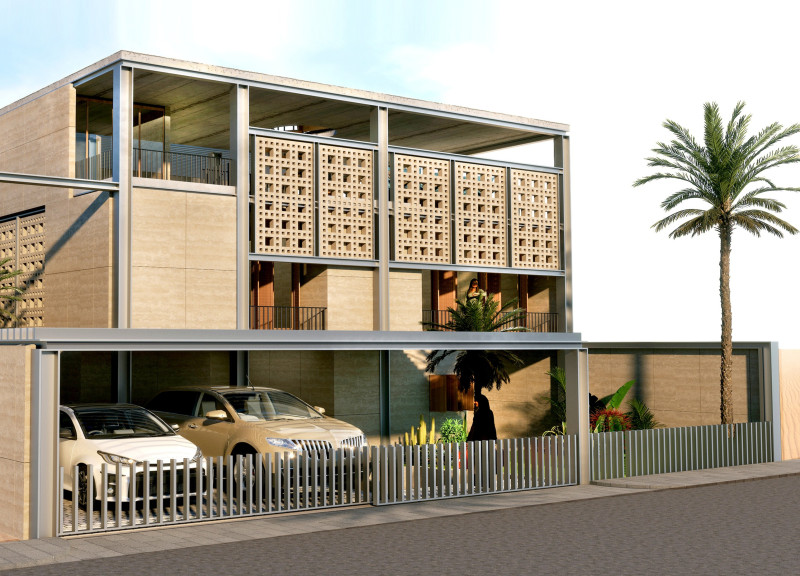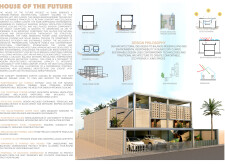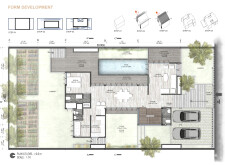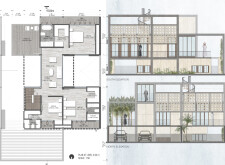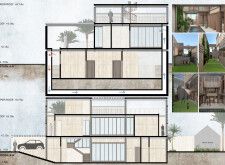5 key facts about this project
**Project Overview**
The House of the Future is located in Dubai and addresses the unique challenges presented by the region's climatic conditions. This architectural concept focuses on integrating modern living with sustainable practices, utilizing technology alongside natural elements to create a residential space that prioritizes ecological awareness. By responding to environmental demands, the design aims to deliver comfortable, energy-efficient living areas that adhere to contemporary lifestyles.
**Design Elements and Materials**
The project incorporates a range of materials and systems that enhance both functionality and sustainability. A steel framework provides essential structural integrity, while precast concrete panels contribute to thermal mass and durability. Innovative features include evaporative cooling systems for passive climate control and grey water systems for irrigation. The use of glass in windows and doors enhances natural light, promoting a connection with the outdoor environment. Additionally, strategically placed shading devices and landscaping elements, such as pergolas and greenhouses, support indoor climate moderation.
**Sustainability Integration**
The design embodies a commitment to sustainability through various innovative features. It employs subterranean air tunnels that utilize earth cooling principles to manage indoor temperatures effectively. A solar-powered roof decreases reliance on the electrical grid, while courtyard systems facilitate natural ventilation. The inclusion of a household greenhouse further supports local food production and self-sufficiency. Overall, the House of the Future employs advanced ecological strategies, ensuring energy efficiency and climate adaptability to enhance the quality of life for its residents.


